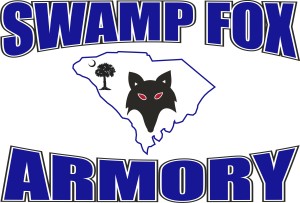Blockchain Services & Technology Offerings By Infosys
Scott Stornetta, two researchers who wanted to implement a system where document time stamps could not be tampered with. But it wasn’t until almost two decades later, with the launch of Bitcoin in January 2009, that blockchain had its first real-world application. Such a record could be a list of transactions , but it also is possible for a blockchain to hold a variety of other information like legal contracts, state identifications, or a company’s product inventory.
Certificate authorities.Individuals who issue and manage the different types of certificates required to run a permissioned blockchain. Consensus.Through consensus, all parties agree to the network-verified transaction. Blockchains have various consensus mechanisms, includingproof of stake,multisignature, andPBFT. Synopsys is a leading provider of electronic design automation solutions and services.
Polkadot has a sophisticated governance system where all stakeholders have a voice. Network upgrades are coordinated on-chain and enacted autonomously and without forking the network, ensuring that Polkadot’s https://allcoinss.com/ development remains future-proof and community-driven. Eliminates or reduces paper processes, need for intermediaries, speeds up transaction times and increases efficiencies and transparency.
- Learn how customers are using Oracle Blockchain Platform to transform their business processes, enabling secure collaboration based on trusted data.
- From greater user privacy and heightened security to lower processing fees and fewer errors, blockchain technology may very well see applications beyond those outlined above.
- By this stage in network development we can see that organization R1 is fully participating in the network.
- Frequent delays & losses— paper-based and data stored locally by each party.
- A hash function takes the information in each block and uses it to create the hash—a unique string of characters.
- In the previous step, we saw how R4 could grant R1 permission to create new consortia.
As developers create blockchain applications, they should give precedent to securing their blockchain applications and services. Building security in from the start is critical to ensuring a successful and secure blockchain application. Blockchains can be designed as private ledgers, so an owner is able to limit who can make changes or additions to the blockchain. While the pool of participants may be smaller on a private blockchain, it’s still decentralized among those who participate. Private blockchains maintain the security of any data stored within the database using the same encryption methods. Distributed ledger technology allows record keeping across multiple computers, known as “nodes.” Any user of the blockchain can be a node, but it takes a lot of computer power to operate.
Blockchain Technology: Platforms, Tools And Use Cases
In practice, R4 would configure the mod_policy such that R4 would need to also approve the change, or that all organizations in the mod_policy would have to approve the change. There’s lots of flexibility to make the mod_policy as sophisticated as it needs to be to support whatever change process is required. Finally, it is helpful to understand how network and channel configurations are physically realized. We can see that network https://allcoinss.com/the-us-is-number-one-in-blockchain-patents/ and channel configurations are logically singular – there is one for the network, and one for each channel. This is important; every component that accesses the network or the channel must have a shared understanding of the permissions granted to different organizations. Note how the channel configurations CC1 and CC2 remain completely separate from each other, and completely separate from the network configuration, NC4.
For supply chain, the initial applications range from the ability to track a mango from farm to store or proving the heritage of a genuine object from factory to store to managing records . For CIOs, it’s necessary to understand what blockchain is and how it works, and more importantly, how the technology can be utilized to further mission-critical business priorities — or even disrupt the business completely. But only 3% of CIOs have a form of live and operational blockchain for their business, and those solutions that do exist focus mostly on efficiency of existing process versus business disruption and new value creation. Large companies looking to explore new disruptive business opportunities need to think beyond efficiency gains. It means that an organization’s peers can have one or more leaders connected to the ordering service. This can help to improve resilience and scalability in large networks which process high volumes of transactions.
Cryptocurrencies: The Beginning Of Blockchain’s Technological Rise
This proposal resulted in the creation of ISO Technical Committee 307, Blockchain and Distributed Ledger Technologies. Due in part to its roots as the backbone of a digital currency, blockchain is furthest along on the development curve in the financial services industry. Most of the attention on the technology has been focused on using the technology to streamline back-office processes such as trade processing, clearing, and settlement. Because it is decentralized and theoretically lives forever digitally, the blockchain record provides a standardized accounting of all touch points in any transaction.
It means that although ordering service node O4 is the actor that created consortia X1 and X2 and channels C1 and C2, the intelligence of the network is contained in the network configuration NC4 that O4 is obeying. As long as O4 behaves as a good actor, and correctly implements the policies defined in NC4 whenever it is dealing with network resources, https://www.cryptofacilities.com/ our network will behave as all organizations have agreed. In many ways NC4 can be considered more important than O4 because, ultimately, it controls network access. The network has grown through the addition of infrastructure from organization R2. Specifically, R2 has added peer node P2, which hosts a copy of ledger L1, and chaincode S5.
